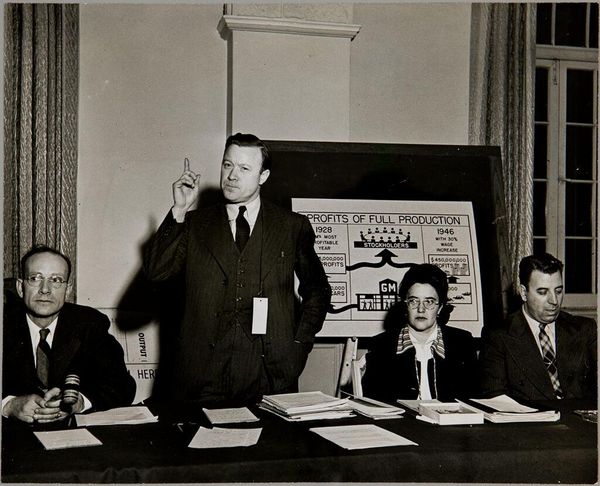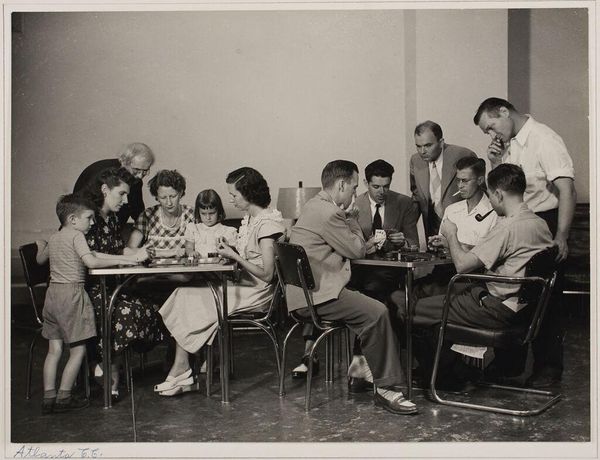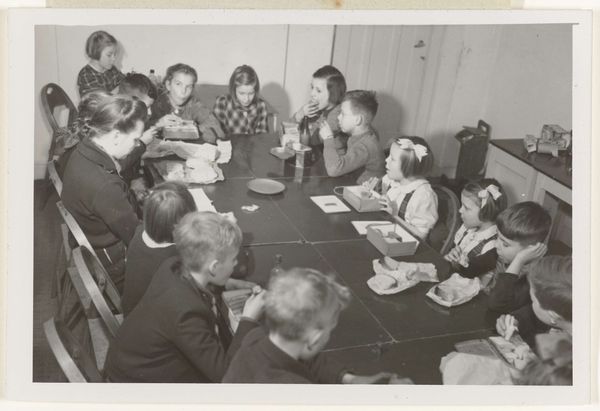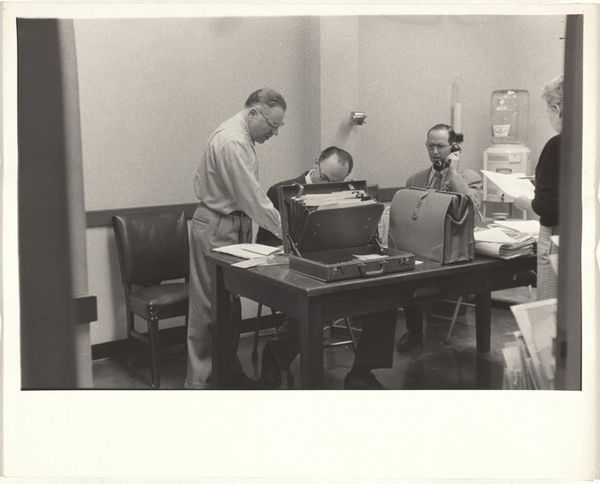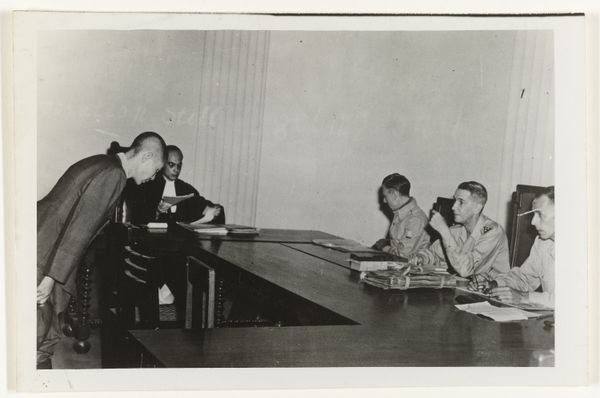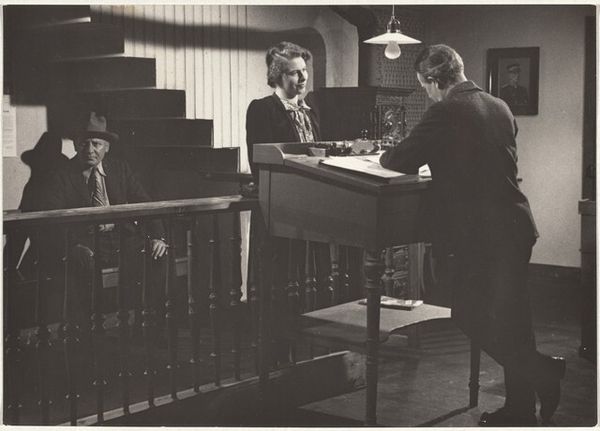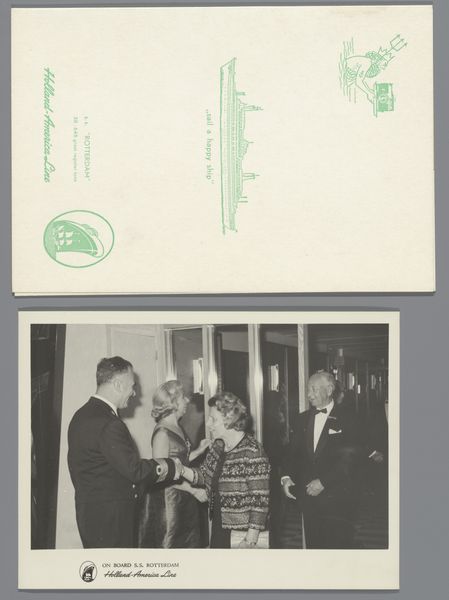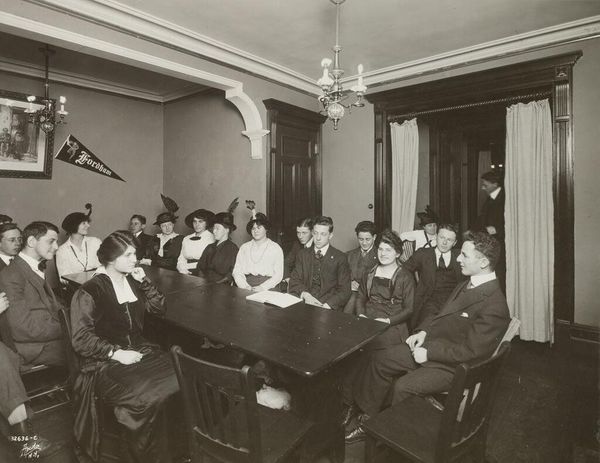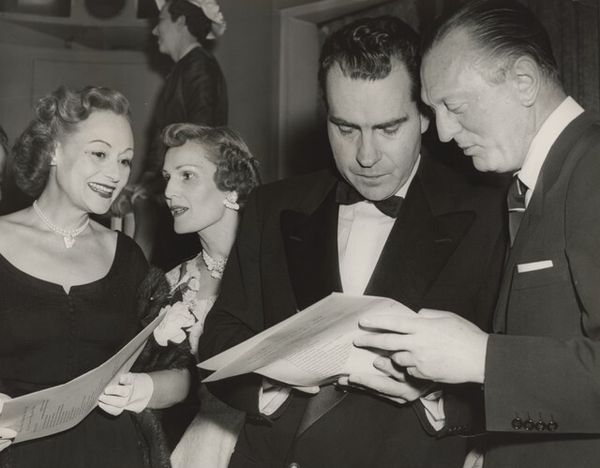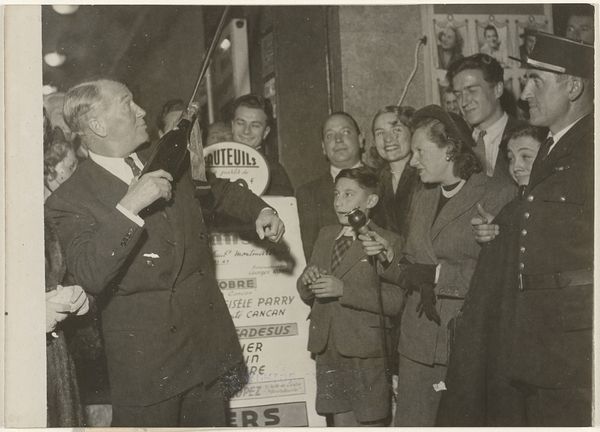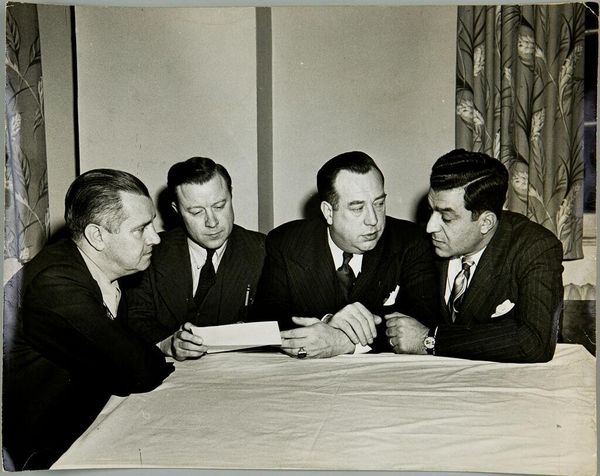
photography, gelatin-silver-print
#
portrait
#
archive photography
#
photography
#
culture event photography
#
historical photography
#
group-portraits
#
gelatin-silver-print
#
realism
Dimensions: image: 35 × 27.7 cm (13 3/4 × 10 7/8 in.) sheet: 35.56 × 28.26 cm (14 × 11 1/8 in.)
Copyright: National Gallery of Art: CC0 1.0
Editor: So, this is "Senator Harry Cain," a gelatin silver print, probably from the 1940s, by Arthur Ellis. It depicts a man seemingly rushing from his office while his staff attends to him. It’s quite a bustling scene. What captures your attention in this image? Curator: The composition points to interesting aspects of power dynamics. It's tempting to read the scene literally, as simply capturing a busy Senator, but the photographer’s choices position Cain centrally while he’s being assisted, almost served, by his staff. It evokes questions about how politicians cultivate their public image. Look at the almost theatrical backdrop of the world map. How does this staging contribute to the perception of Cain’s role and importance? Editor: I see what you mean. The map gives him a global presence, connecting him to larger world events. But is that staging just part of the conventions of political photography at the time, or is there a more critical commentary intended? Curator: That's a great question. Considering the time, we might see this within the conventions of image-making intending to build confidence in post-war American leadership. Yet, viewing it through a contemporary lens, the scene hints at an unequal labor relationship and constructed persona. Who gets to be seen as “important,” and what structures reinforce that? Editor: So, by analyzing the context, the work highlights the role of photography, especially portraits like this one, in shaping public perception and even legitimizing political authority. Curator: Exactly. It compels us to think about the socio-political factors inherent in what we often perceive as objective historical records. Editor: It's interesting how seemingly simple scenes can be so layered when considering their context. Thank you, it has shifted my perspective.
Comments
No comments
Be the first to comment and join the conversation on the ultimate creative platform.
